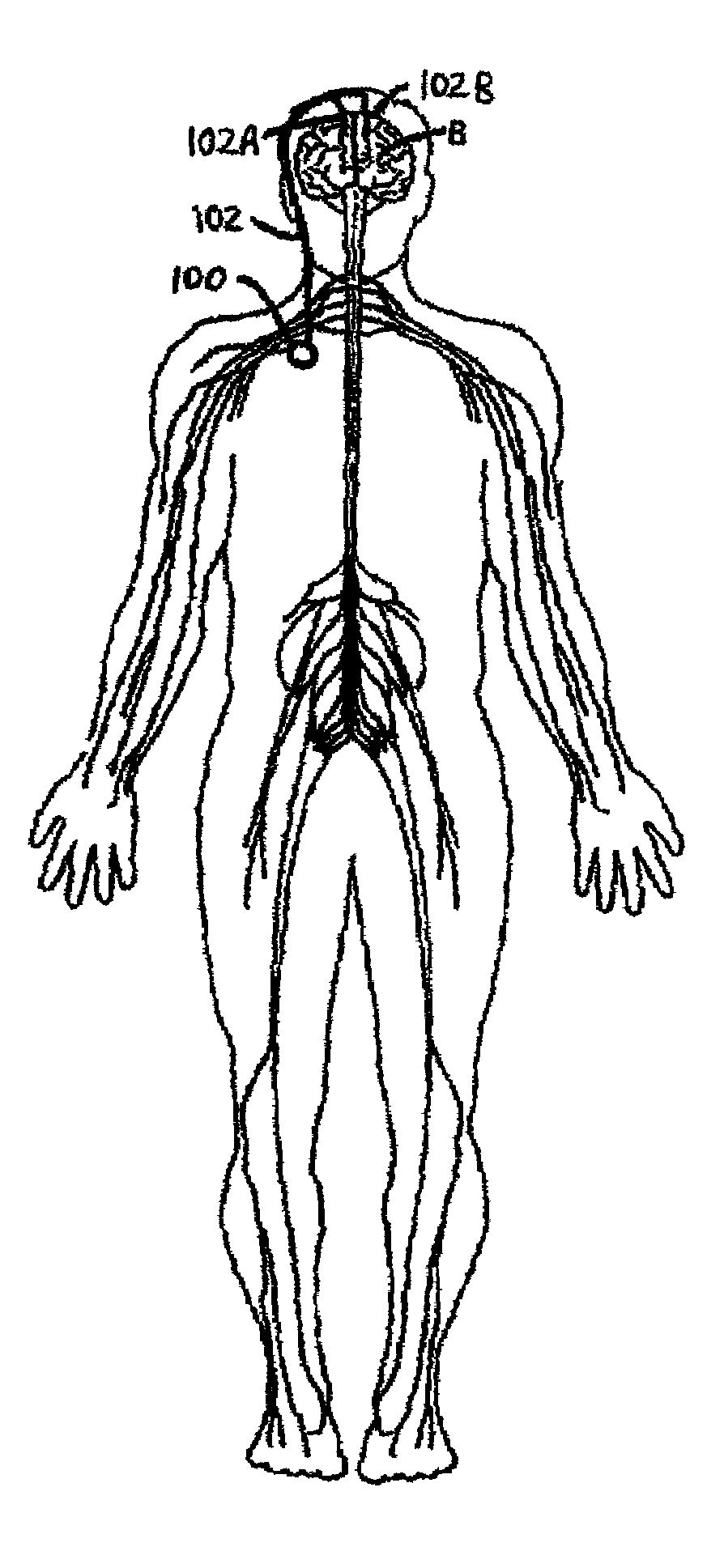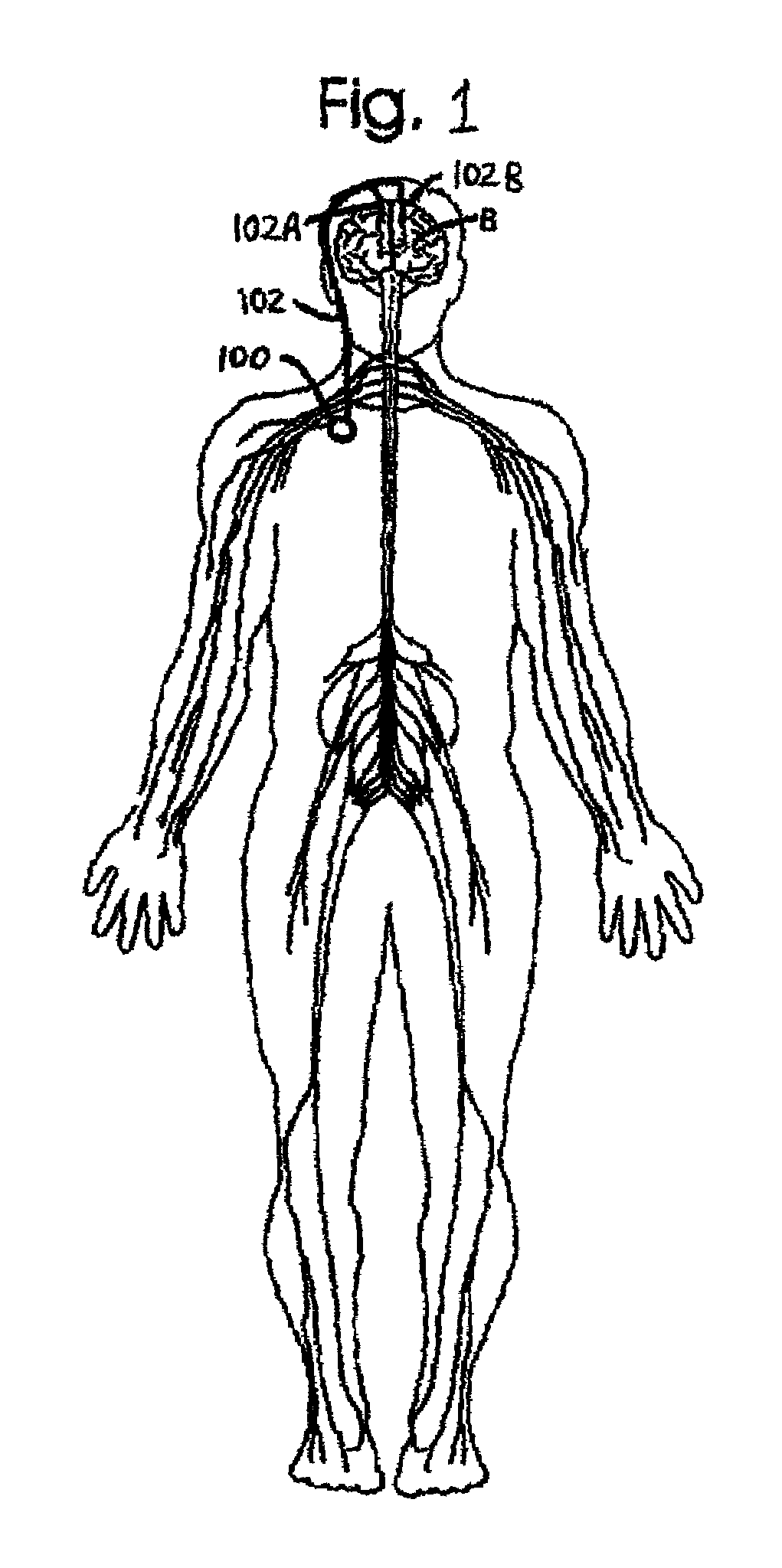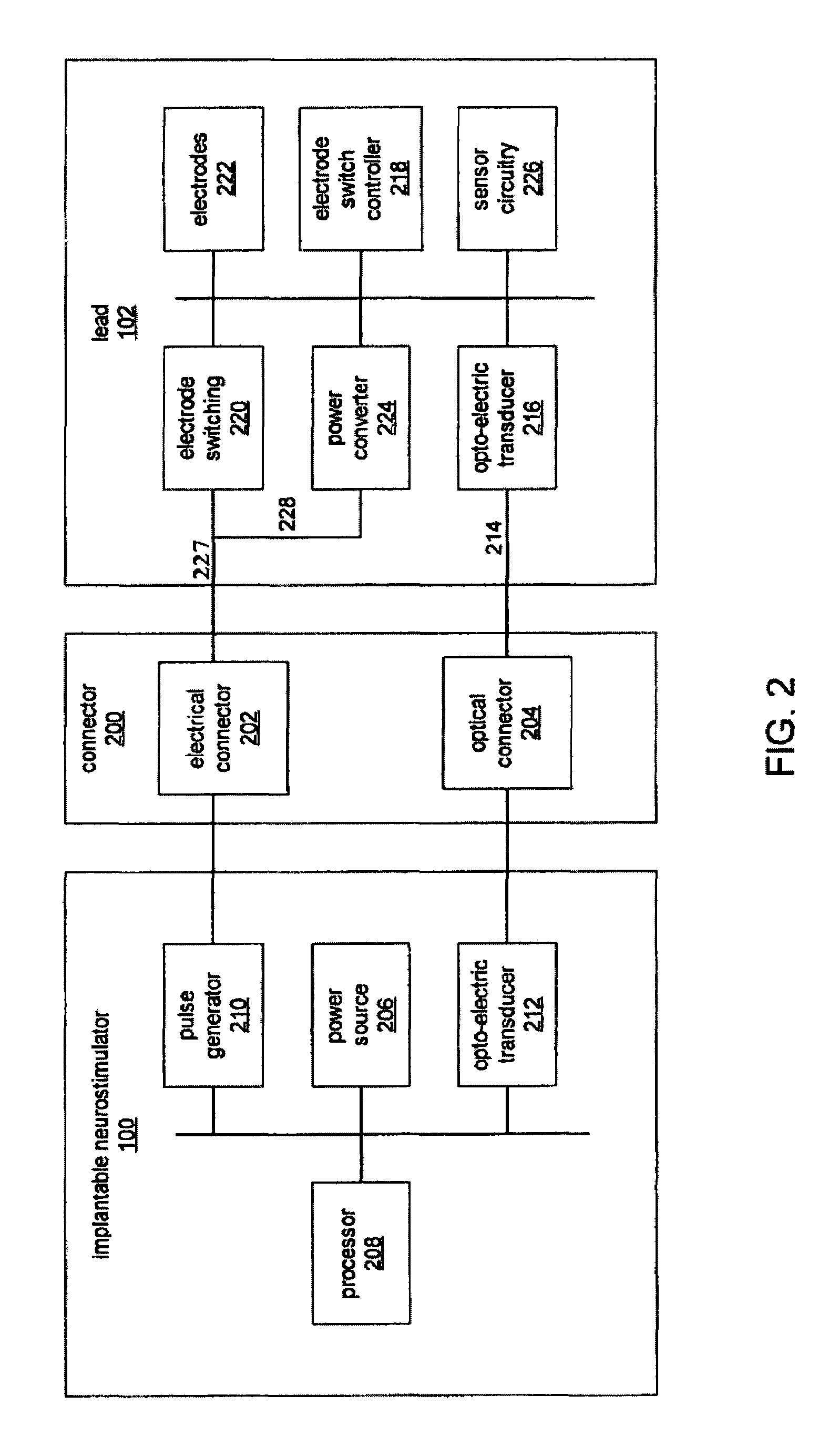Optical communication of neurostimulation-system information
a neurostimulation system and communication technology, applied in the direction of spinal electrodes, internal electrodes, therapy, etc., can solve the problems of limiting the number of electrodes and electrically conductive electrode wires being susceptible to electromagnetic interference (emi)
- Summary
- Abstract
- Description
- Claims
- Application Information
AI Technical Summary
Benefits of technology
Problems solved by technology
Method used
Image
Examples
Embodiment Construction
[0016]FIG. 1 depicts a microprocessor-controlled neurostimulator 100 in accordance with an illustrative embodiment of the invention. Neurostimulator 100 may be implanted below the skin of a patient, or alternatively, may be an external device. The human-implantable neurostimulator 100 may take the form of a modified signal generator Model 7424 manufactured by Medtronic, Inc. under the trademark Itrel II®. Lead 102 may be any lead suitable for stimulation and may, as described in more detail below, include fiber optic cable. The lead 102 may be positioned to stimulate tissue at various locations within the patient's body, including one or more specific sites in the patient's brain B. The lead 102 may be divided into multiple distal ends, such as lead ends 102A and 102B. Lead distal ends of this type may include one or more stimulation electrodes and may be implanted, by conventional stereotactic surgical techniques, into a portion of the brain such as the thalamus, the internal capsu...
PUM
 Login to View More
Login to View More Abstract
Description
Claims
Application Information
 Login to View More
Login to View More - R&D
- Intellectual Property
- Life Sciences
- Materials
- Tech Scout
- Unparalleled Data Quality
- Higher Quality Content
- 60% Fewer Hallucinations
Browse by: Latest US Patents, China's latest patents, Technical Efficacy Thesaurus, Application Domain, Technology Topic, Popular Technical Reports.
© 2025 PatSnap. All rights reserved.Legal|Privacy policy|Modern Slavery Act Transparency Statement|Sitemap|About US| Contact US: help@patsnap.com



